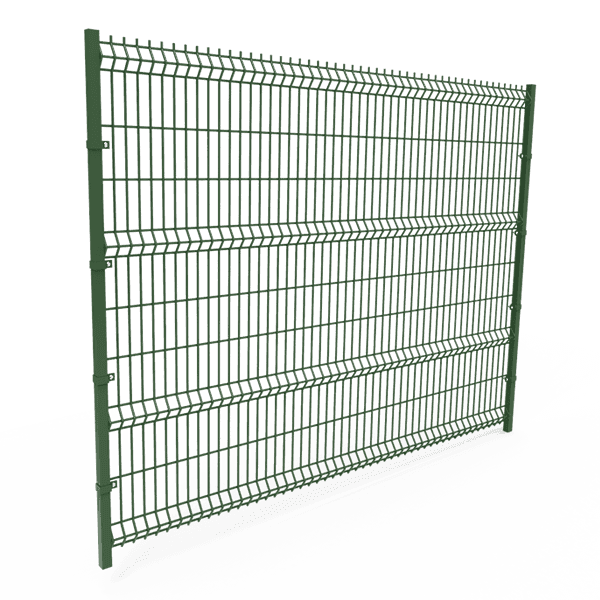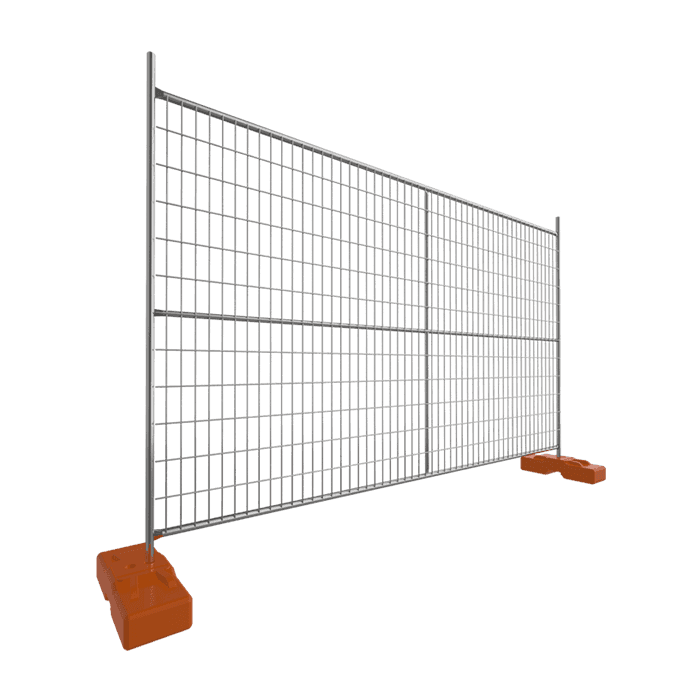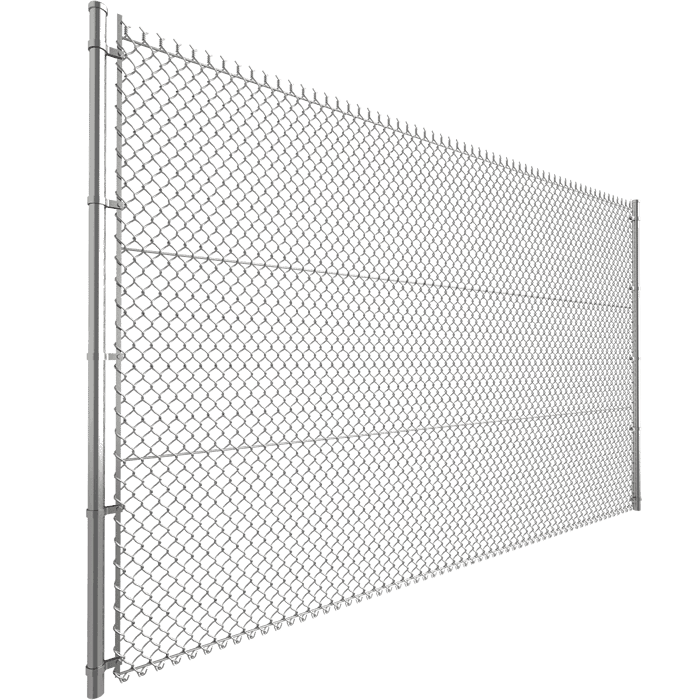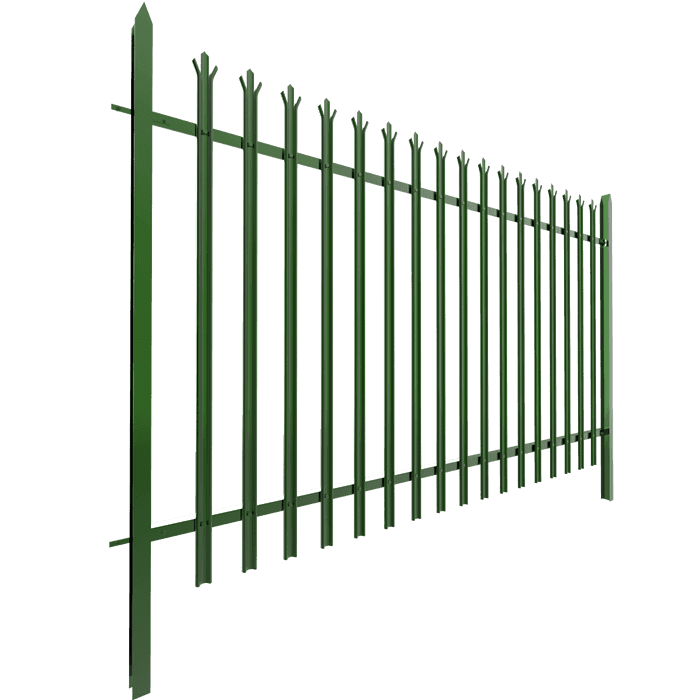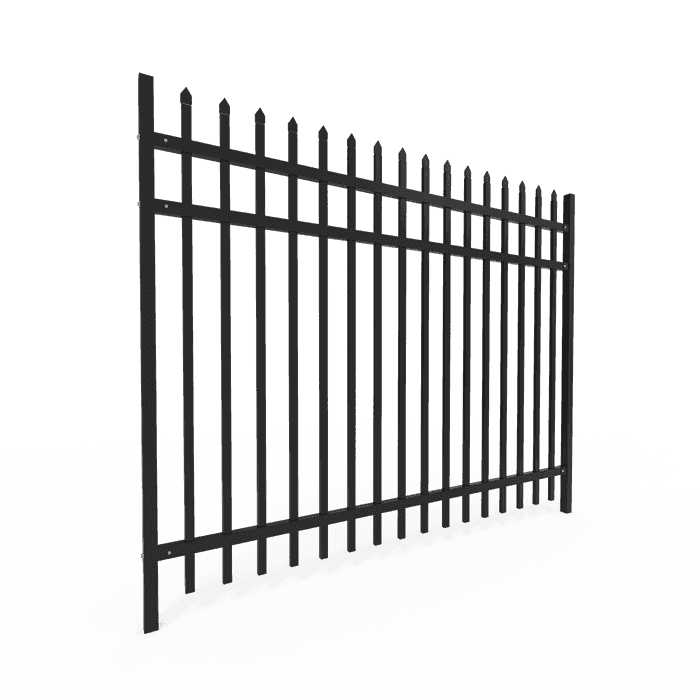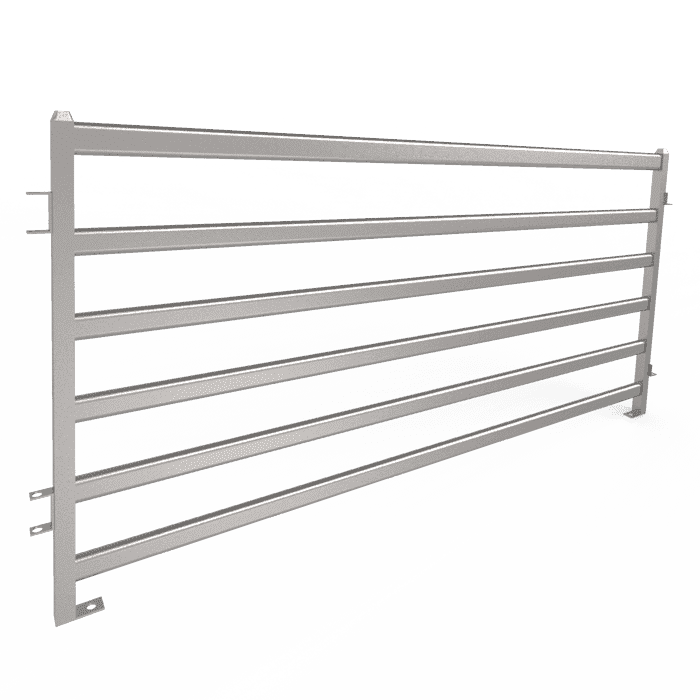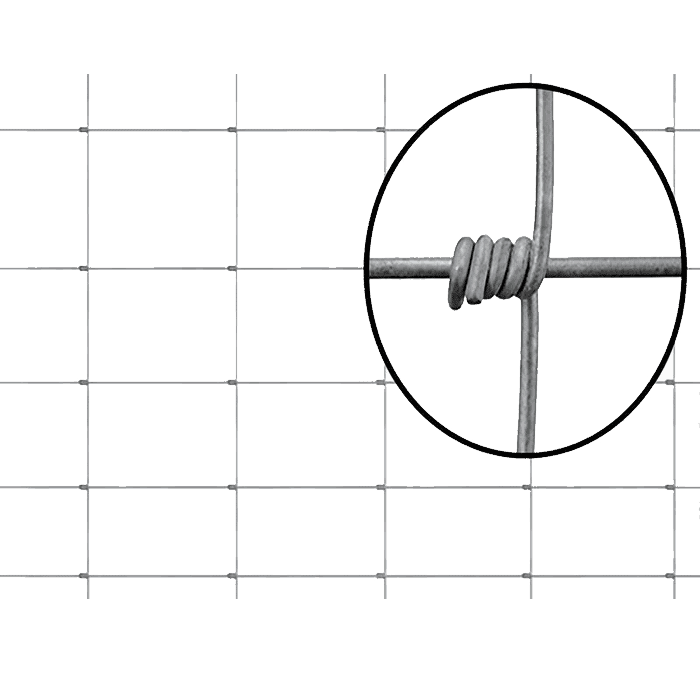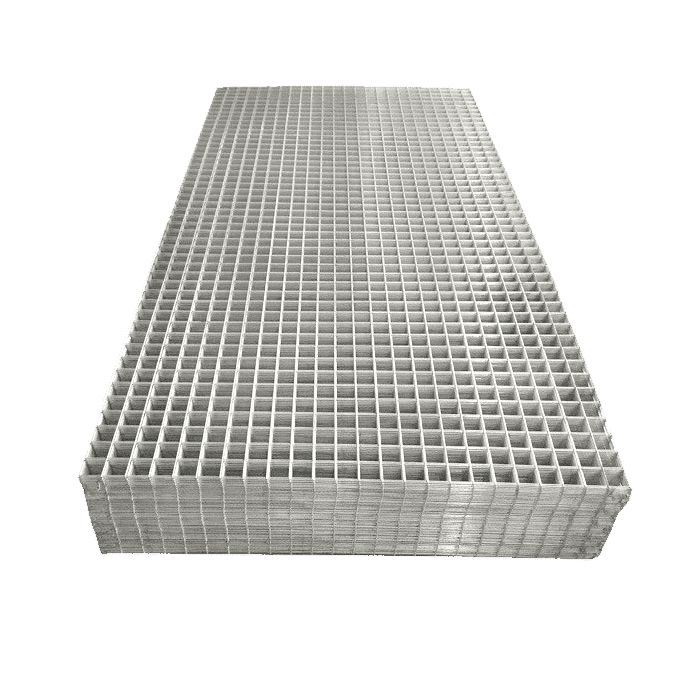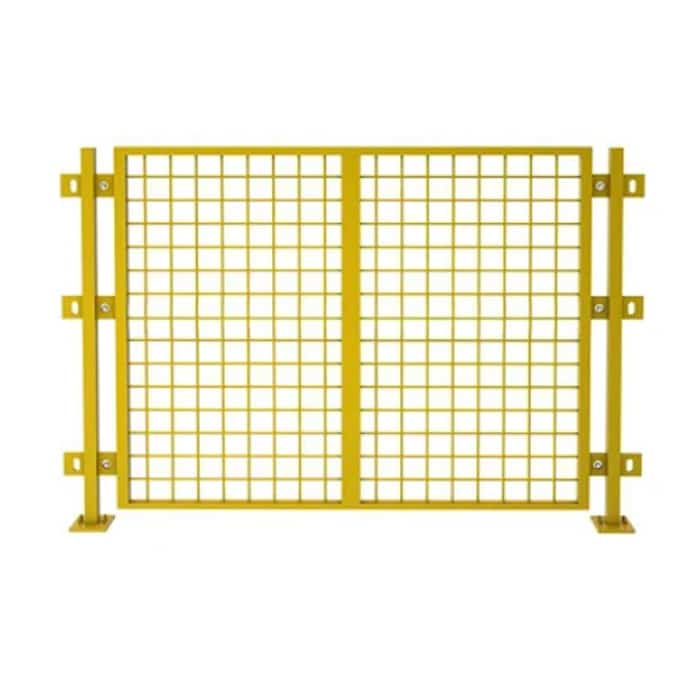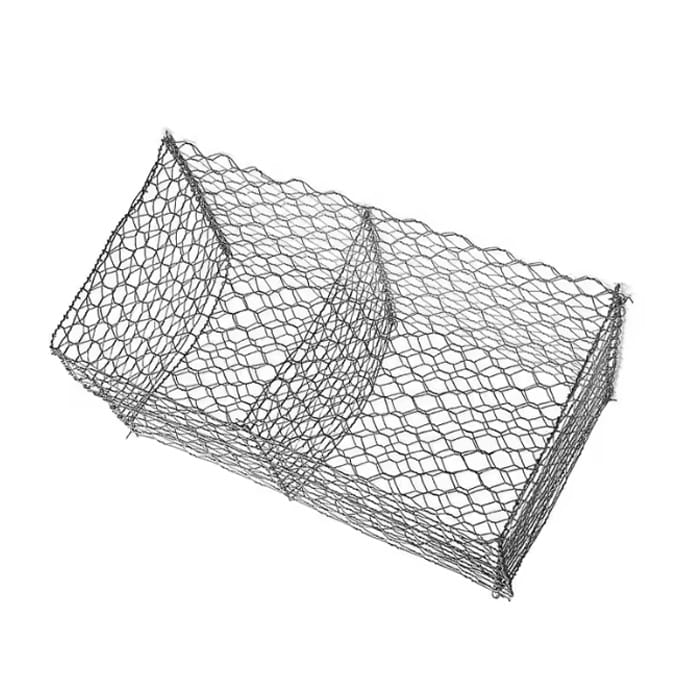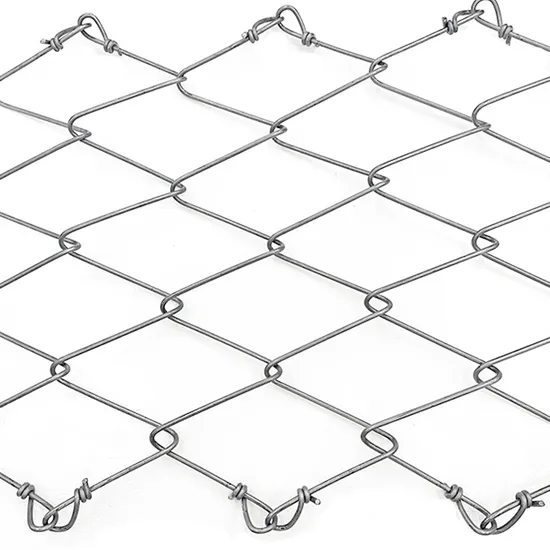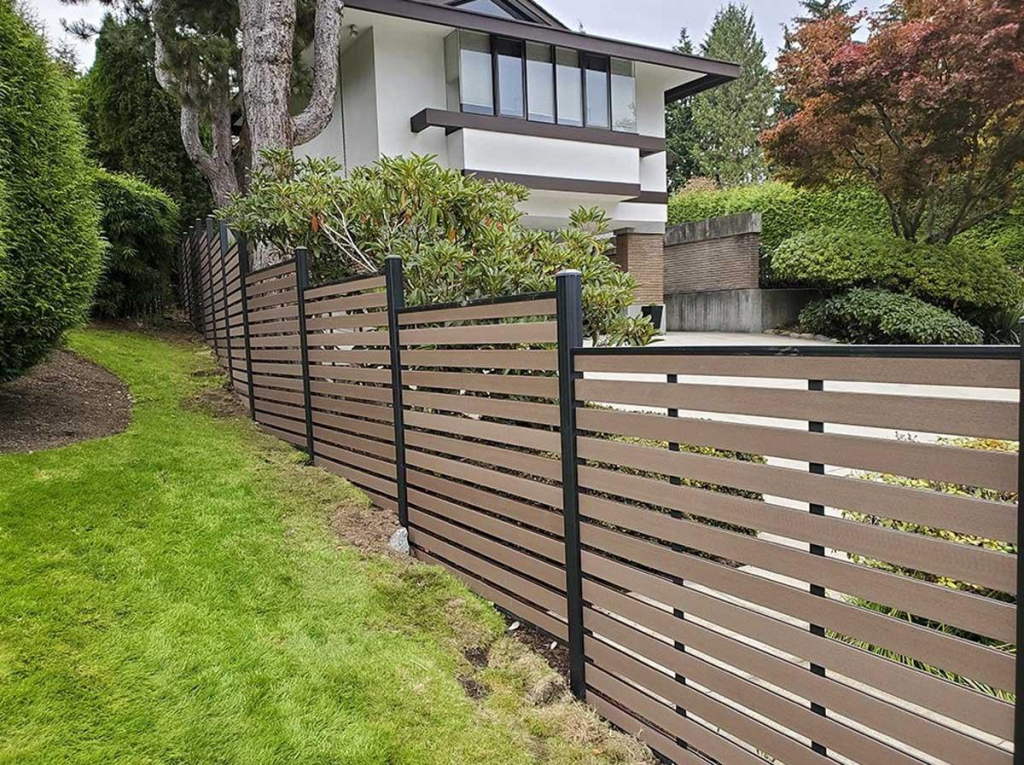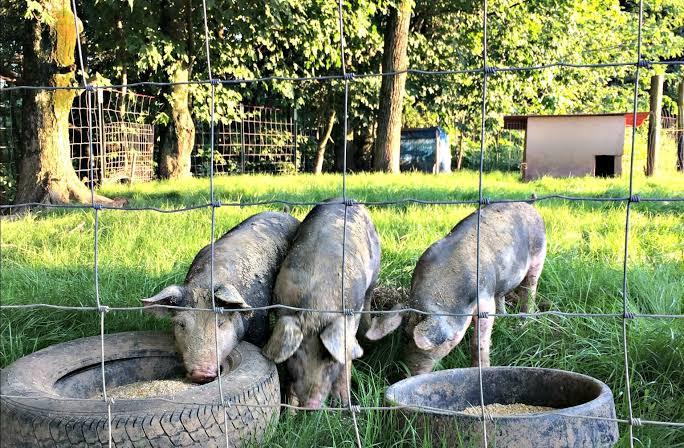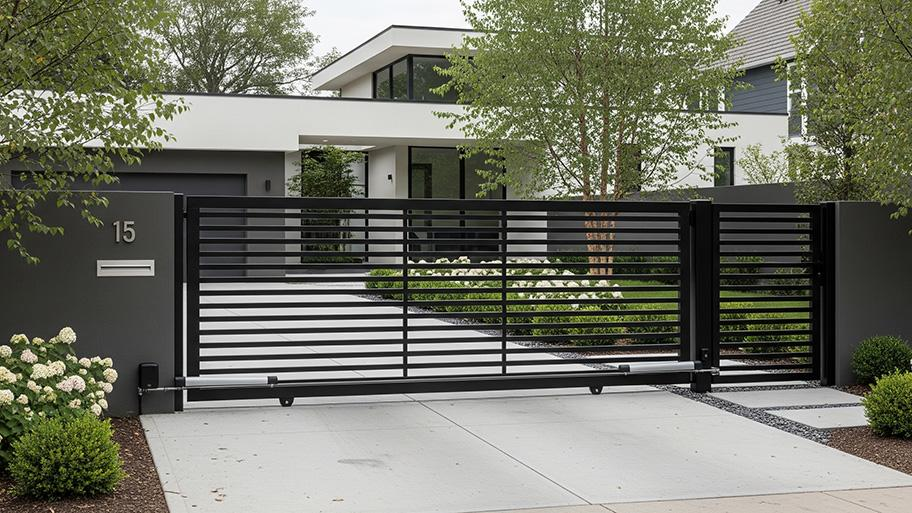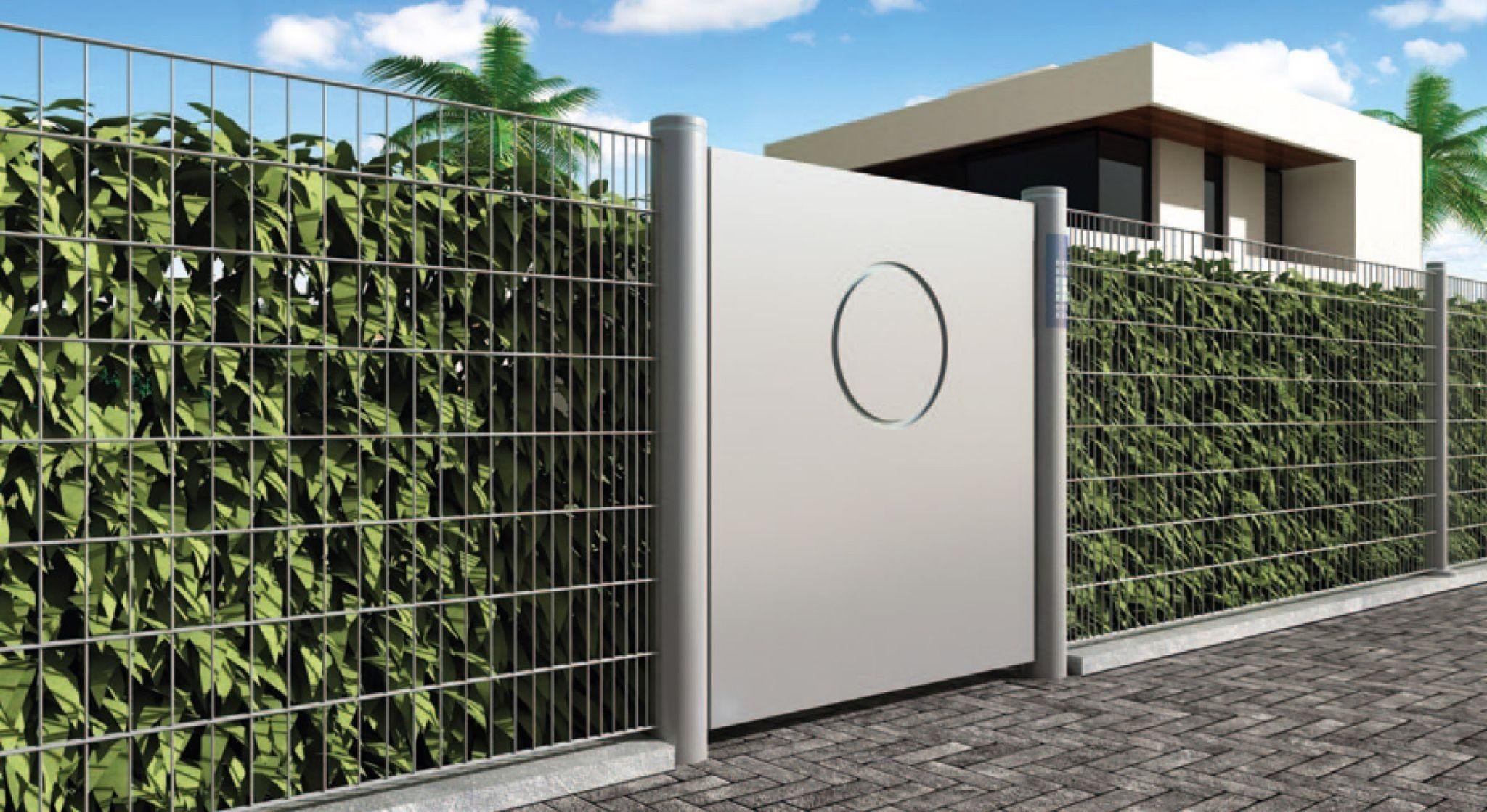Оглавление
Когда вы думаете об обустройстве своего участка, забор — одна из самых важных инвестиций. Он определяет границы вашего участка, обеспечивает безопасность, уединение и формирует облик вашего дома. Выбор подходящего материала для забора может быть непростой задачей, особенно учитывая разнообразие доступных сегодня вариантов.
Многие домовладельцы, рассматривающие возможность установки ограждения, сталкивались с композитными заборами и хотели бы узнать: лучше ли композитные ограждения по сравнению с обычными? В этой статье мы рассмотрим, что такое композитные ограждения, из чего они сделаны, их преимущества и недостатки, стоимость и то, действительно ли они подходят для вашего дома.
1. Что такое композитный забор?
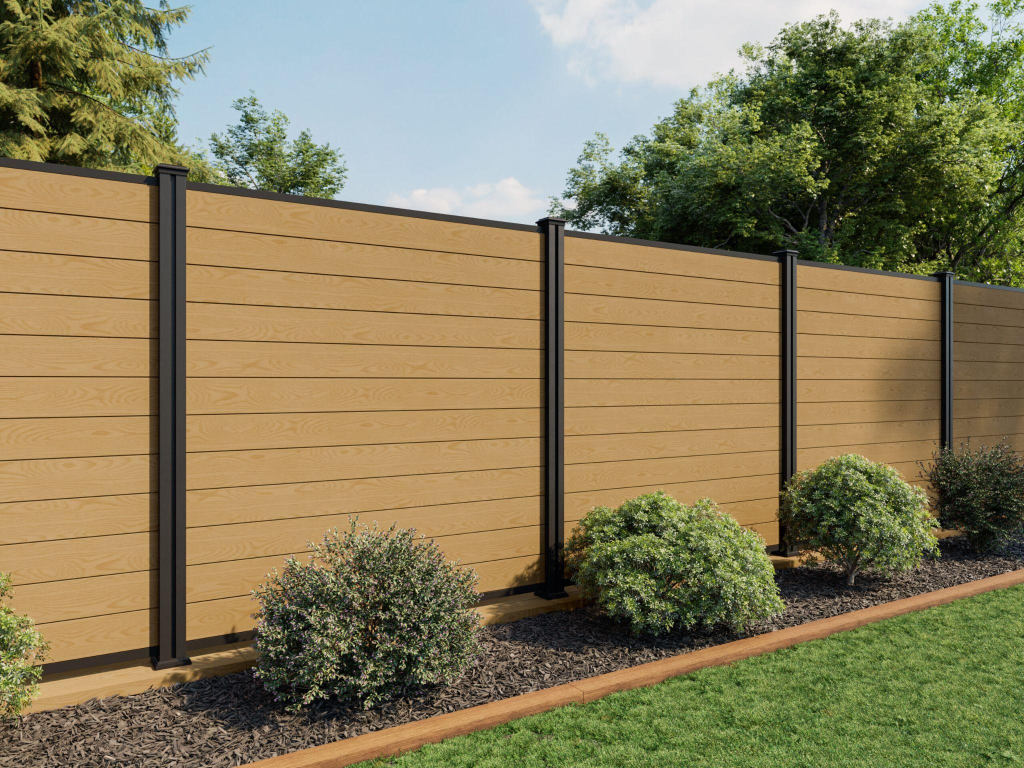
Композитный забор — это современный вариант ограждения, сочетающий в себе природную привлекательность дерева с прочностью и устойчивостью синтетических материалов. Он был разработан для преодоления недостатков традиционных деревянных заборов, которые, несмотря на свою красоту, часто требуют постоянного ухода и имеют короткий срок службы. Композитные заборы постоянно набирают популярность среди домовладельцев, архитекторов и застройщиков, которые ищут решение, сочетающее в себе эстетику, долговечность и удобство.
По сути, композитный забор призван имитировать внешний вид дерева, но при этом не доставлять хлопот. Традиционные деревянные заборы со временем могут трескаться, деформироваться или гнить, особенно под воздействием суровых погодных условий. Композитные же заборы, напротив, устойчивы к этим проблемам благодаря продуманной конструкции. Они сохраняют форму и внешний вид десятилетиями, даже при минимальном уходе.
Ещё одной отличительной чертой композитных ограждений является единообразие. Натуральная древесина часто различается по текстуре, цвету и текстуре, что может привести к небольшим несоответствиям при строительстве больших заборов. Композитные панели производятся по контролируемому процессу, что обеспечивает единообразие всех досок. Эта однородность не только повышает привлекательность ограждения, но и создаёт изысканный, современный вид, который нравится многим домовладельцам.
Композитные ограждения также отличаются универсальностью дизайна. Производители выпускают панели, имитирующие внешний вид кедра, красного дерева или дуба, а также современные оттенки, например, сланцево-серый или эспрессо-коричневый. Это позволяет домовладельцам сочетать свои ограждения с различными архитектурными стилями, будь то современный городской таунхаус или деревенский дом.
Помимо эстетики, композитные заборы известны своим долгим сроком службы. Многие из них могут прослужить 20–30 лет и дольше, в зависимости от климата и условий эксплуатации. Это делает их отличным выбором для домовладельцев, которые ищут решение «установил и забыл» — такое, которое прослужит десятилетия без необходимости ремонта и замены, как это часто бывает с деревянными заборами.
2. Из каких материалов изготавливаются композитные заборы?
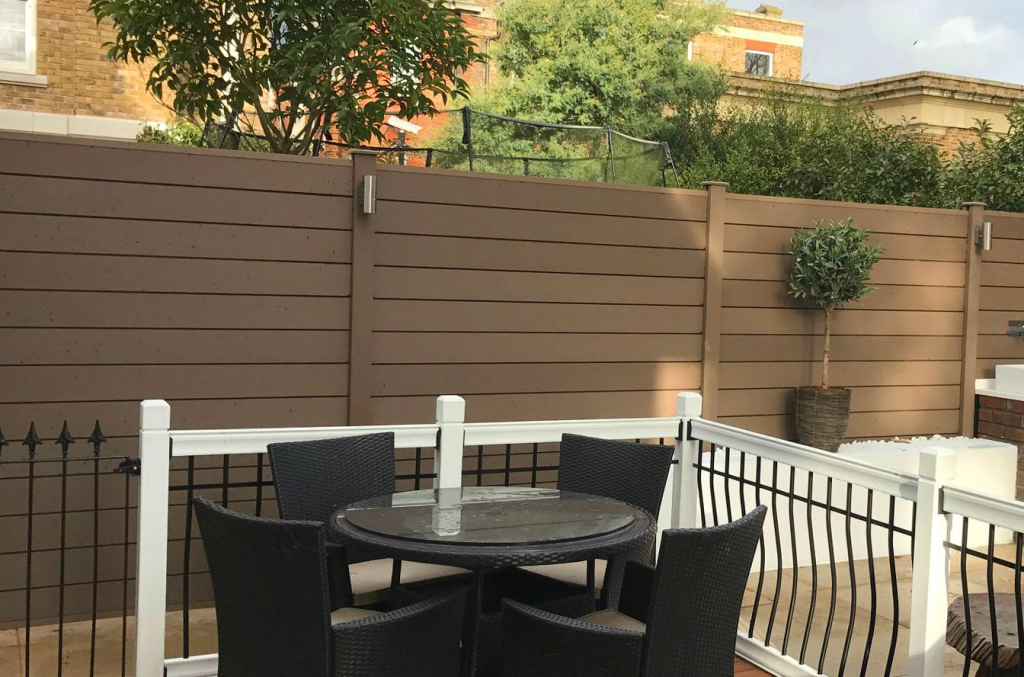
Композитные заборы изготавливаются из комбинации натуральных и синтетических материалов, тщательно подобранных для достижения одновременно прочности и красоты. Два основных ингредиента — древесные волокна (часто 55–65% в смеси) и полимерные пластики (примерно 35–45%). Такой баланс позволяет материалу сохранять визуальное тепло дерева, приобретая при этом защитные свойства пластика.
Древесина обычно поступает из переработанных или восстановленных источников. Опилки, стружка и остатки древесины с лесопилок — распространённые ингредиенты. Используя эти побочные продукты, производители сокращают количество отходов и дают новую жизнь материалам, которые иначе были бы выброшены. Такой экологичный подход привлекает многих покупателей, заботящихся об окружающей среде.
В состав пластика обычно входит переработанный полиэтилен или полипропилен. Эти пластики прочны, устойчивы к атмосферным воздействиям и гибки, что делает их идеальными для использования на открытом воздухе. Они защищают древесные волокна внутри композита, предотвращая такие проблемы, как водопоглощение, разбухание и повреждение насекомыми, которые часто встречаются у традиционных деревянных заборов.
Помимо древесины и пластика, композитные ограждения содержат добавки, улучшающие эксплуатационные характеристики. Например, УФ-стабилизаторы предотвращают выцветание и изменение цвета под воздействием длительного воздействия солнца. Цветные пигменты добавляются в процессе производства для достижения естественных оттенков или современной отделки. Связующие вещества обеспечивают прочное соединение древесных волокон и пластика, создавая прочный и стабильный материал.
Некоторые производители премиум-класса идут ещё дальше, добавляя защитные внешние слои или покрытия. Эти покрытия защищают внутреннюю часть от влаги и повышают стойкость цвета. Композитные покрытия особенно популярны в регионах с суровыми погодными условиями, поскольку они ещё больше продлевают срок службы ограждения.
3. Преимущества и недостатки композитных ограждений

Композитные ограждения стали популярными, поскольку решают многие проблемы, с которыми домовладельцы сталкиваются при использовании традиционных ограждений. Однако, как и любой материал, они имеют свои сильные и слабые стороны. Ниже мы подробно рассмотрим каждое преимущество и недостаток.
Преимущества композитных ограждений
1. Долговечность и долговечность
Одна из главных причин, по которой домовладельцы выбирают композитные ограждения, — это их долговечность. В отличие от дерева, они не гниют, не раскалываются и не деформируются под воздействием дождя и влажности.
Композитный забор может легко прослужить 20–30 лет, часто превосходя по долговечности деревянные и соперничая с высококачественными виниловыми заборами. Многие производители предоставляют на свои заборы гарантию 15–25 лет, демонстрируя уверенность в долговечности своей продукции.
2. Низкие эксплуатационные расходы
Композитные заборы не требуют особого ухода по сравнению с деревянными, которые нужно красить, морить или герметизировать каждые пару лет. Для композитных заборов обычно достаточно простого мытья водой с мягким мылом.
Эта простая в обслуживании функция экономит время и деньги на протяжении многих лет, что делает её отличным выбором для занятых семей или арендаторов. Она особенно полезна для крупных проектов по установке ограждений, где расходы на обслуживание могут быстро расти.
3. Экологически чистые материалы
Большинство композитных заборов изготавливаются из до 95% переработанных материаловЭто означает, что они помогают сократить количество пластиковых отходов и повторно использовать древесные отходы, которые в противном случае пришлось бы выбросить.
Для домовладельцев, заботящихся об экологии, это важный аргумент. Композитные ограждения не требуют вырубки новых деревьев, а используют переработанные ресурсы. Выбор композитного ограждения — это небольшой, но значимый шаг к снижению воздействия на окружающую среду.
4. Эстетическая привлекательность
Композитные заборы имитируют внешний вид натурального дерева, сохраняя его текстуру и естественные цвета. В отличие от винила, который иногда может выглядеть слишком искусственно, композит выглядит реалистично и привлекательно.
Они также доступны в широком диапазоне оттенков — от тёплых коричневых до современных серых, что позволяет домовладельцам выбирать, как подобрать ограждение к внешнему виду своего дома. Благодаря своей универсальности композитные материалы пользуются популярностью при строительстве современных жилых комплексов.
5. Устойчивость к атмосферным воздействиям
Экстремальная жара, ультрафиолетовое излучение, проливные дожди и снег могут привести к растрескиванию древесины или изменению цвета винила. Композитные ограждения производятся с учётом всех этих факторов.
Благодаря встроенным УФ-стабилизаторам композитные панели меньше выцветают на солнце. Они также лучше переносят циклы замораживания-оттаивания, что особенно важно для домовладельцев, живущих в регионах с суровыми зимами.
6. Устойчивость к вредителям
В отличие от дерева, композитные заборы не привлекают термитов, муравьёв-плотников и других вредителей, которые грызут древесину. Это значит, что вам не придётся беспокоиться о повреждениях насекомыми в течение многих лет.
Для домовладельцев в регионах, подверженных нападению термитов, уже одно это делает композитное ограждение стоящим усовершенствованием.
Недостатки композитных ограждений
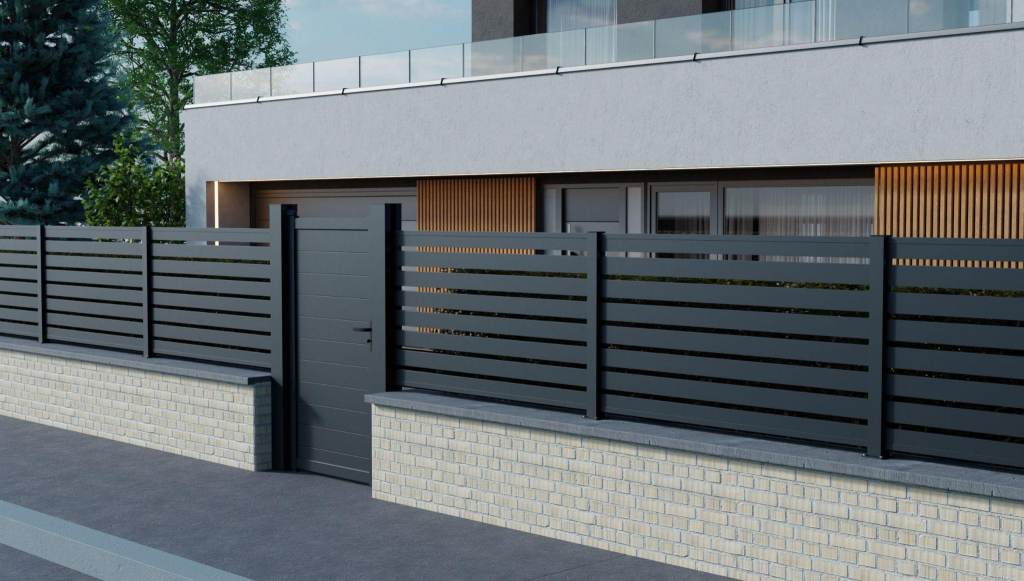
1. Более высокие первоначальные затраты
Пожалуй, самый большой недостаток композитных ограждений — это их стоимость. В среднем, стоимость композитных ограждений составляет от $25 до $60 за погонный фут, что значительно дороже деревянных.
Такая высокая цена может показаться пугающей, особенно для домовладельцев с ограниченным бюджетом. Однако стоит отметить, что долгосрочные расходы на обслуживание значительно ниже, что может компенсировать первоначальные расходы.
2. Ограниченные возможности цвета и выцветание
Хотя композитные заборы и выпускаются в нескольких оттенках, цветовая палитра более ограничена по сравнению с древесиной, которую можно покрасить или покрыть морилкой в любой цвет.
Кроме того, некоторые композитные заборы, особенно тёмные, могут со временем слегка выгореть под воздействием солнца. Хотя обычно это происходит постепенно, стоит учитывать это, если вы цените эстетику.
3. Более тяжелый материал
Композит плотнее и тяжелее дерева или винила. Это делает его прочнее, но при этом монтаж может быть более сложным.
Домовладельцы часто обращаются к профессиональным установщикам композитных ограждений, что увеличивает затраты на рабочую силу. Самостоятельная установка возможна, но не всегда практична.
4. Проблемы ремонта и замены
Если часть вашего композитного забора повреждена, ремонт не сводится к замене деревянной доски. Поскольку материал производится партиями, найти точное соответствие цвета для замены может быть непросто.
Это означает, что домовладельцам, возможно, придется заменять целые панели, а не только одну часть, что может оказаться более дорогостоящим и неудобным.
5. Экологические компромиссы
Хотя композитные ограждения используют переработанные материалы, они не биоразлагаемы. По окончании срока службы их утилизация может представлять собой экологическую проблему.
Кроме того, производство композитных ограждений требует больше энергии по сравнению с простой обработкой древесины. Это создаёт компромисс между долговечностью и краткосрочным воздействием на окружающую среду.
4. Смета расходов на строительство композитного забора

При планировании бюджета на забор стоимость часто становится решающим фактором. Композитные заборы считаются премиальным вариантом, то есть изначально стоят дороже, чем деревянные или сетчатые. В среднем композитные заборы стоят от $25 до $60 за погонный фут, включая материалы и установку.
Для сравнения, забор длиной 150 футов (45,5 м) — стандартный размер для загородных домов — обойдется от $3750 (минимальная цена) до $9000 (максимальная цена). Это значительно дороже, чем деревянный забор, стоимость которого обычно составляет от $15 до $25 (минимальная цена) за фут, или сетчатый забор, который зачастую ещё дешевле.
Процесс установки также увеличивает стоимость. Композитные панели для забора тяжелее и плотнее деревянных, поэтому для их установки требуются более прочные столбы и, как правило, профессиональная помощь. Самостоятельная установка возможна, но большинство домовладельцев предпочитают нанимать подрядчиков, что увеличивает стоимость работы. В зависимости от региона, стоимость только работы может увеличиться на $10–$20 за фут.
Однако, несмотря на высокую первоначальную стоимость, композитные ограждения обеспечивают отличную долгосрочную экономию. Деревянный забор может потребовать повторной покраски или тонировки каждые два-три года, что может обойтись в несколько сотен долларов за цикл обслуживания. За 20 лет эти расходы могут составить тысячи. Композитные же ограждения требуют лишь периодической чистки мылом и водой, что снижает ежегодные расходы на обслуживание практически до нуля.
Ещё один важный фактор — стоимость при перепродаже. Прочный и красивый композитный забор может повысить привлекательность вашего дома и его рыночную стоимость. Потенциальные покупатели часто рассматривают его как бонус, зная, что им не придётся вкладывать средства в ремонт или замену вскоре после переезда. Хотя это преимущество сложнее оценить в денежном эквиваленте, оно важно для домовладельцев, планирующих долгосрочные инвестиции.
5. Какой забор выбрать: композитный или обычный?
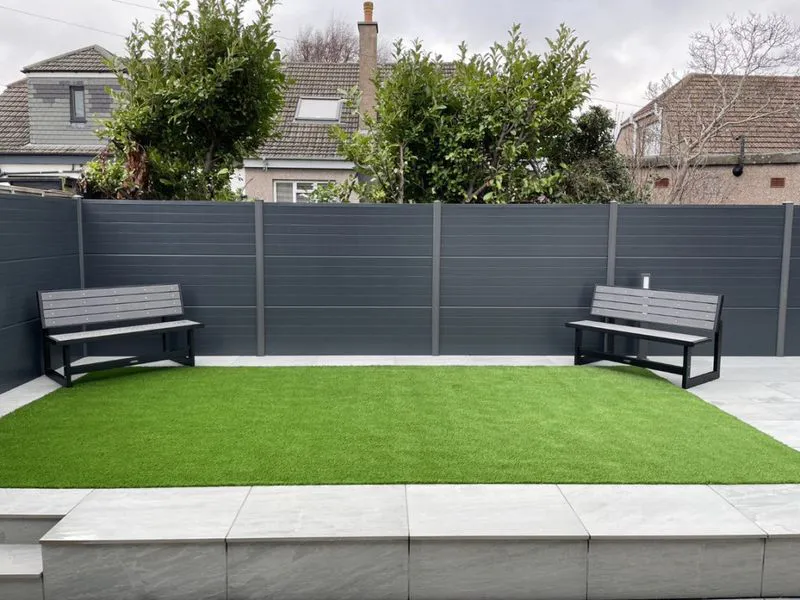
Выбор между композитными и традиционными материалами для ограждения зависит от ваших приоритетов.
Если вам важны долговечность, простота ухода и экологичность, композитное ограждение — отличный выбор. Оно не требует особого ухода, выглядит привлекательно и прослужит десятилетия.
Однако, если для вас важны бюджет и гибкость, традиционный деревянный забор может подойти лучше. Древесина изначально дешевле и позволяет использовать специальные морилки или краски в соответствии с вашими дизайнерскими предпочтениями.
Для многих домовладельцев композитные ограждения — это инвестиция по принципу «купи один раз и наслаждайся десятилетиями». Для других, особенно тех, кто планирует переехать в ближайшие годы, дерево может оказаться более практичным вариантом.
В конечном счёте, композитные ограждения действительно более долговечны, более удобны в обслуживании и менее подвержены влиянию на окружающую среду. Но подходит ли он вам, зависит от соотношения цены и долгосрочной ценности.
Заключительные мысли
Композитные ограждения — это современное решение, превосходящее по многим параметрам деревянные и виниловые. Они служат дольше, требуют минимального ухода и изготавливаются из переработанных материалов. Хотя первоначальные затраты выше, многие домовладельцы считают эту инвестицию оправданной благодаря удобству и душевному спокойствию, которые они обеспечивают.
Если вам нужен забор, который будет отлично выглядеть десятилетиями и не потребует особого ухода, композитный забор — явный победитель. Но если вам нужен быстрый и бюджетный вариант, и вы не против регулярного ухода, дерево или винил тоже могут сослужить вам хорошую службу.
В конечном счете, правильный забор — это тот, который отвечает вашим потребностям, вписывается в ваш бюджет и улучшает внешнее пространство вашего дома.

